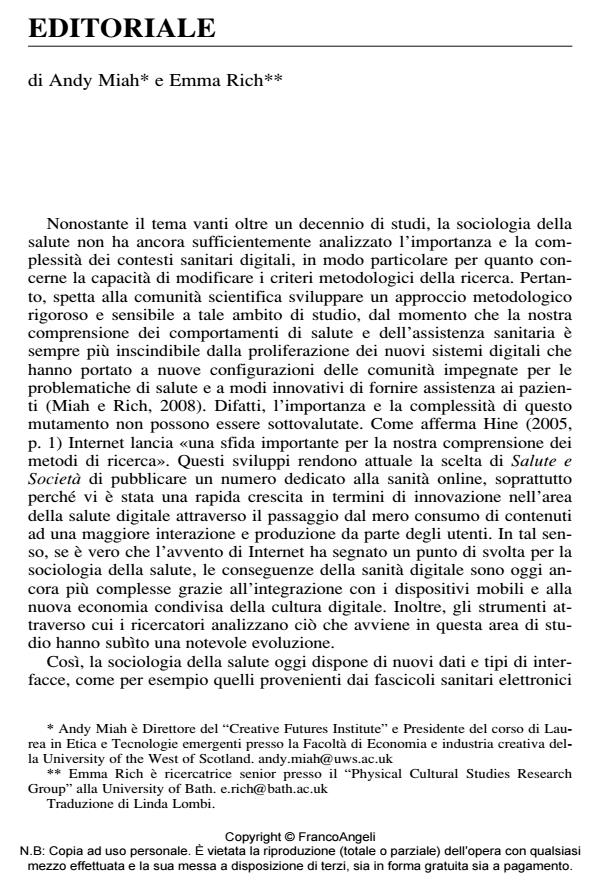Editoriale
Journal title SALUTE E SOCIETÀ
Author/s Andy Miah, Emma Rich
Publishing Year 2014 Issue 2014/3
Language Italian Pages 7 P. 11-17 File size 497 KB
DOI 10.3280/SES2014-003001
DOI is like a bar code for intellectual property: to have more infomation
click here

FrancoAngeli is member of Publishers International Linking Association, Inc (PILA), a not-for-profit association which run the CrossRef service enabling links to and from online scholarly content.
Andy Miah, Emma Rich, Editoriale in "SALUTE E SOCIETÀ" 3/2014, pp 11-17, DOI: 10.3280/SES2014-003001